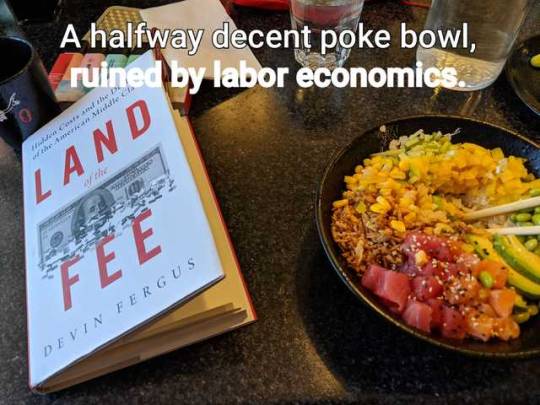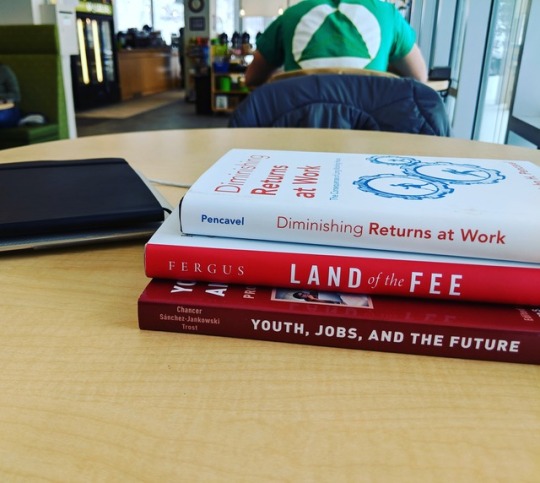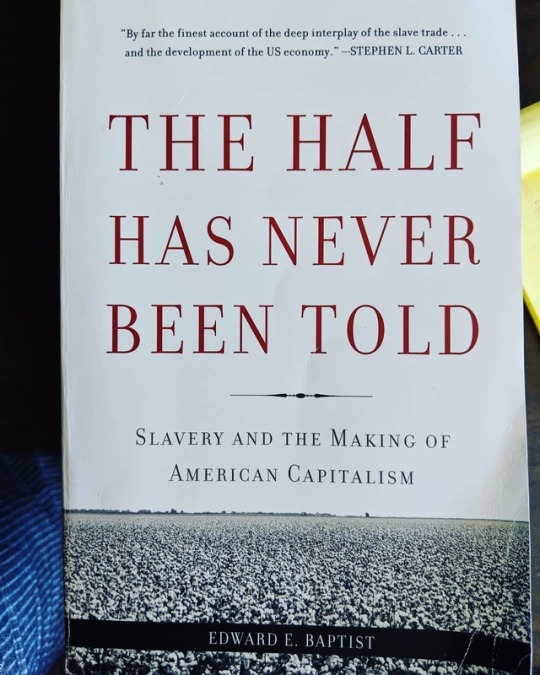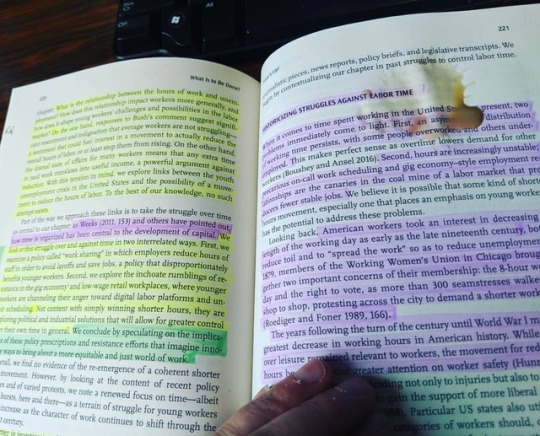#LaborPolicy
Text
Impact Of Economic Policies On Business: 10 Facts You Need To Know

Economic policies on business refer to government actions that influence a country's economic environment, including taxation, trade regulations, monetary policies, and incentives. These policies can impact business operations, growth, and overall economic stability.The intricate interplay between economic policies and the business landscape has long been a subject of fascination for economists, business owners, and policymakers alike.
The impact of economic policies on business is undeniable, shaping everything from market conditions to consumer behavior. Investors, entrepreneurs, and business owners must grasp the massive impact of these restrictions. The 10 Essential Facts You Need to Know About the Impact of Economic Policies on Businesses are covered in this post.
Economic Policies And Business Landscape
Explanation Of Economic Policies:
Economic policies encompass a range of measures adopted by governments to regulate and influence their country's economic performance. These policies can be broadly categorized into several key types:
Monetary Policies: These policies are enacted by central banks and focus on controlling the money supply and interest rates. The central bank's decisions regarding interest rates impact borrowing costs, affecting businesses' access to capital and consumer spending behavior.
Fiscal Policies: Fiscal policies involve government decisions about taxation and government spending. Lowering taxes can stimulate consumer spending and business investments, while increased government spending can boost demand for goods and services.
Trade Policies: Trade policies encompass international trade regulations, tariffs, and trade agreements. They significantly affect businesses engaged in import/export activities, as changes in tariffs or trade agreements can alter the cost of goods and the competitiveness of domestic industries.
Regulatory Policies: Regulatory policies pertain to rules and regulations governing business operations. These include environmental regulations, labor laws, health and safety standards, and more. Compliance with these policies can impact business costs and operational efficiency.
Influence Of Economic Policies On The Business Environment:
The economic policies adopted by governments wield substantial influence over the business environment, often shaping its dynamics and growth prospects. Here's how these policies impact businesses:
Investment Climate: Monetary policies, such as interest rate adjustments, can impact businesses' decisions to invest in expansion or new ventures. Lower interest rates might encourage borrowing for investment, while higher rates can lead to more cautious investment strategies.
Consumer Behavior: Fiscal policies like tax cuts or stimulus measures can directly influence consumer disposable income. When consumers have more money to spend, businesses across various sectors experience increased demand for goods and services.
Market Competitiveness: Trade policies play a crucial role in determining the competitiveness of domestic industries in the global market. Tariff reductions through trade agreements can provide businesses with access to larger markets and foster international growth.
Operational Costs: Regulatory policies impose standards that businesses must adhere to in their operations. Compliance with these policies can lead to additional costs, impacting profit margins, but can also enhance a business's reputation for responsible practices.
Supply Chain Impact: Trade policies, especially those related to imports and exports, can disrupt supply chains. Businesses relying on global suppliers may experience fluctuations in costs and availability due to changes in trade regulations.
Fact 1: Monetary Policy
Monetary policy stands as a pivotal instrument within a country's economic framework, wielding considerable influence over business dynamics. Monetary policy is the control of the money supply and interest rates by a central bank to promote economic stability and growth. Multidimensional economic governance profoundly affects business environments.
Definition And Role Of Monetary Policy:
Monetary policy guides a nation's economy. Open market activities, reserve requirements, and discount rates help it achieve economic goals. Generally, the primary goals include curbing inflation, stimulating employment, and fostering sustainable economic expansion. By adjusting the availability of money and credit, monetary policy exerts a substantial influence on the overall business landscape.
How Changes In Interest Rates Affect Borrowing And Investment By Businesses:
Interest rates, manipulated through monetary policy, wield substantial influence over the financial decisions of businesses. When central banks alter interest rates, it triggers a domino effect across the business realm. Lowering interest rates encourages borrowing, as the cost of capital decreases. This prompts businesses to undertake more investments, expand operations, and innovate. Conversely, higher interest rates can deter borrowing, potentially stalling business growth and investment.
Case Studies/Examples Illustrating The Impact Of Monetary Policy On Businesses:
Concrete instances of how monetary policy translates into real-world business consequences provide valuable insights into its impact. Consider the aftermath of the 2008 financial crisis when central banks globally slashed interest rates and infused liquidity into the market. This decisive action facilitated businesses' access to capital at lower costs, spurring investments and aiding in the recovery process.
Conversely, during periods of tightened monetary policy, like the 'Volcker Shock' in the early 1980s, businesses faced heightened borrowing costs, leading to reduced investments and, in some cases, contraction.Understanding the intricate relationship between monetary policy and businesses is imperative for entrepreneurs, investors, and policymakers alike. These examples underscore the undeniable role of monetary policy in shaping the fortunes of businesses, underscoring the need for a keen awareness of its mechanics and repercussions.
Fact 2: Fiscal Policy
Fiscal policy is a crucial tool that governments around the world employ to manage their economies. It refers to the use of government spending and taxation to influence economic activity, particularly in terms of aggregate demand and overall economic growth. By altering the levels of government expenditure and taxation, fiscal policy aims to stabilize the economy, encourage investment, and promote sustainable growth.
Definition And Role Of Fiscal Policy:
Fiscal policy involves the government's decisions regarding its expenditures and revenues with the intent of achieving specific economic objectives. This policy can be expansionary or contractionary, depending on the prevailing economic conditions. During periods of economic downturns, governments might increase spending and lower taxes to boost demand and stimulate economic activity. In contrast, governments may cut expenditure and raise taxes to cool the economy during strong inflation or growth.
How Changes In Taxation And Government Spending Impact Business Operations:
Changes in taxation and government spending can significantly impact the operations of businesses. Taxation directly affects a company's profitability by influencing its expenses and overall financial health. Alterations in tax rates can influence consumers' purchasing power and disposable income, consequently affecting demand for goods and services. For businesses, changes in tax policies can lead to shifts in production costs, pricing strategies, and investment decisions.
Government spending plays an equally critical role. Increased government spending, particularly in sectors related to infrastructure, healthcare, and education, can create opportunities for businesses to provide goods and services required for these projects. This injection of demand can lead to increased production and employment in relevant industries.
Case Studies/Examples Illustrating The Impact Of Fiscal Policy On Businesses:
The Great Recession (2007-2009): During this period of economic downturn, many governments implemented expansionary fiscal policies to stimulate economic activity. The American Recovery and Reinvestment Act of 2009, for instance, involved significant government spending on infrastructure projects and tax cuts, indirectly aiding industries involved in construction, manufacturing, and technology.
Austerity Measures in Europe: In contrast to expansionary policies, some European countries implemented austerity measures in response to the Eurozone debt crisis. These measures involved substantial cuts in government spending and increases in taxes. The resulting decrease in consumer spending and demand had negative repercussions for numerous businesses, leading to closures, layoffs, and decreased economic growth.
COVID-19 Pandemic Responses: The global response to the COVID-19 pandemic included various fiscal measures. Governments introduced stimulus packages, tax breaks, and financial assistance to businesses in sectors most affected by lockdowns and reduced consumer activity. These interventions aimed to prevent widespread business closures and maintain economic stability during the crisis.
#economicpolicy#businessimpact#economicgrowth#businessregulation#taxpolicy#laborpolicy#tradepolicy#monetarypolicy#fiscalpolicy#investmentclimate#businessconfidence
0 notes
Text
News from Australia, 18 July
Constitutional expert Prof Greg Craven is furious at being quoted in the no campaign's essay and will complain to the Australian Electoral Commission.
Craven accuses the no campaign of misleading conduct and criticizes their essay as embarrassing, while prominent yes campaigners slam it as cooked and filled with misleading information.
The no essay includes quotes from Craven that oppose the voice, despite him publicly supporting it, leading to accusations of misleading and disreputable tactics.
2. Labor plans to scrap the policy that strips government subsidies and loans from university students who fail half their subjects.
The interim review of the university system highlights inequality in higher education and the need to address student safety and staff underpayments.
The government aims to increase university enrolments and boost participation from disadvantaged backgrounds to meet the future skills challenge.
More on this:
The majority of Australians will have a university degree in the next 15 years, emphasizing the increasing demand for educated workers. The Australian government recognizes the need for changes in the university system to make it more accessible to students from various backgrounds, including those from outer suburbs, regions, poor backgrounds, students with disabilities, and Indigenous students. The government has outlined immediate actions to address these challenges, such as abolishing the 50% pass rule, increasing funding for First Nations students, establishing additional Regional University Study Hubs, and providing support for universities to improve governance.
3. The Federal Court in Australia has ruled that the government's plan to build a nuclear waste dump on the land of the Barngarla people in South Australia cannot proceed.
The court found that there was "apprehended bias" and "pre-judgment" by the former resources minister, Keith Pitt, in deciding on the location of the facility.
The Barngarla Determination Aboriginal Corporation (Bdac) had challenged the decision, arguing that the minister had already made up his mind before the formal declaration.
The Barngarla people celebrated the court's ruling, stating that it was a victory for listening to and respecting First Nations people.
The government had spent nearly $14 million in legal costs fighting the Barngarla people's opposition.
Environmental campaigners argue that the waste should be kept at the Lucas Heights facility in Sydney instead.
The current resources minister, Madeleine King, said she would review the ruling.
4. July is bowel cancer awareness month in Australia. The National Cancer Screening Register (NCSR) is a digital platform that aims to increase participation in screening programs for bowel and cervical cancer.
5. A new report has found that more Australians are living alone than ever before. Based on the latest census data, the Australian Institute of Family Studies report found more than one in four households, 26% are now occupied by one person. The average Australian household has shrunk from 2.6 people in 2016 to 2.5 people in 2021, the first decrease in household size since the year 2000. Those living alone are mostly women at 55%, with half the women living alone aged 65 years or older. The report also found that Australian households are more diverse, with more than 1/3 their immigrant households and increasing proportions of Aboriginal and Torres Strait Islanders [per Nirs News/Triple A | Murri Country].
#ConstitutionalExpert#GregCraven#AustralianElectoralCommission#NoCampaign#MisleadingConduct#VoiceDebate#LaborPolicy#UniversityFailRule#HigherEducation#StudentSafety#FederalCourt#BarngarlaPeople#NuclearWasteDump#CancerScreening#NCSR#BowelCancerAwareness#HouseholdSize#AustralianInstituteOfFamilyStudies#DiverseHouseholds#SoloLiving#SocialTrends#AussieReport
0 notes
Text
Workers taking center stage is latest sign U.S....
A spate of recent cases suggest the U.S. is in a new era of antitrust enforcement. #ftc #laborpolicy #workforce
Workers taking center stage is latest sign U.S....
In the hipster antitrust age, workers are taking center stage.
Korn Ferry Connect
0 notes
Text

El papel y la esencia de la #LaborPolicial es la #CreaciónDelOrden, no simplemente la aplicación de la ley y el control del orden.
#Baggot
#ModelosPolicialesProactivos
#PolicíaEspaña
#PASM2022
¡¡Feliz semana para todos!!🤗
0 notes
Text

3 notes
·
View notes
Photo

Thank you Prof! :) #awesome #genderanalysis #laborpolicy (at Occupational Safety & Health Center)
0 notes
Text

#studyblr#phd#mtu#michigantech#gradstudentproblems#gradstudentlife#phdblr#bookstagram#this is why we can't have nice things#dayinthelife#sustainability#laborpolicy#public policy#studygram#brainfood#labor#booksofinstagram#greennewdeal#phdlife
3 notes
·
View notes
Text

I was told to choose a book for a book review. *A* book. But nooooooo....
#bookstagram#gibill#studyblr#phd#veteraning#mtu#gradstudentproblems#soldierscholar#michigantech#gradstudentlife#gibill studyblr#gi bill#dayinthelife#phdblr#this is why we can't have nice things#brainfood#laborpolicy
2 notes
·
View notes
Text

"We can't arrest ourselves out of this."
Alexander, Brian. (2017). Glass House: The 1% Economy and the Shattering of an All-American Town. Picador, New York.
#studyblr#mtu#phd#michigantech#phdblr#bookstagram#laborpolicy#booksofinstagram#sustainability#public policy#studygram#labor#laboreconomics#phdlife
0 notes
Photo

I'm the ILL-est. Get it? #gradstudentingsohard #gradschoolproblems #ILLismyHOMIE #bookstagram #booksofinstagram #LaborPolicy #SustainableLabor #MTU #michigantech #studyblr (at Michigan Technological University) https://www.instagram.com/p/Byn0f6NjQIMePGtbP0myKtl8-5gZMYZ3L8GLpE0/?igshid=qijccclwz08e
#gradstudentingsohard#gradschoolproblems#illismyhomie#bookstagram#booksofinstagram#laborpolicy#sustainablelabor#mtu#michigantech#studyblr
0 notes
Photo

My side project: reading everything I can about the connection between energy transition and slavery #phdblr #studyblr #booksofinstagram #bookstagram #LaborPolicy #MTU #michigantech (at Michigan Technological University) https://www.instagram.com/p/Byn16LCDzMqWJ_L5vTqGNCM_7iDAvCHNGsHFLU0/?igshid=tub5hbe5bvxd
0 notes
Photo

#LaborEconomics #LaborPolicy #phdblr #bookstagram (at Artis Books & Antiques and Uptown Galleries) https://www.instagram.com/p/BxGvCcBBkKNPlDRbhqGvgRMw44VvNy4yw0zR8M0/?utm_source=ig_tumblr_share&igshid=19abz651zdamq
0 notes
Photo

Chancer, L. S., Sanchez-Jankowski, M., & Trost, C. (Eds.). (2018). Youth, Jobs, and the Future: Problems and Prospects. Oxford, New York: Oxford University Press.
https://www.instagram.com/p/Bw2ZakIBlPU5xsO1u9jLZJ6t8baPvDE9FAXAH00/?utm_source=ig_tumblr_share&igshid=4wlhe9ef1vyx
#mtu#michigantech#gradschoolproblems#phdblr#studyblr#laboreconomics#laborpolicy#greennewdeal#bookstagram
0 notes
Photo

#LaborPolicy #LaborEconomics #thefutureofwork #greennewdeal #whatisagoodjob #MTU #michigantech #phdblr #studyblr #studygram #bestmugever (at Michigan Technological University) https://www.instagram.com/p/Bvt954Bh4US2g4Fh4cmwTcn5pBG7MBmzDdkWeE0/?utm_source=ig_tumblr_share&igshid=1qmnrik8sch5z
#laborpolicy#laboreconomics#thefutureofwork#greennewdeal#whatisagoodjob#mtu#michigantech#phdblr#studyblr#studygram#bestmugever
0 notes
Text

#gibill#studyblr#phd#mtu#michigantech#gradstudentlife#gibill studyblr#phdblr#gi bill#bookstagram#labor#laborpolicy#public policy#studygram
0 notes
Photo

Awesome versions of the Labor Code by Atty. Claudio! :) #laborandemployment #laborcode #laborpolicy (at Institute for Labor Studies, DOLE Bldg.)
0 notes